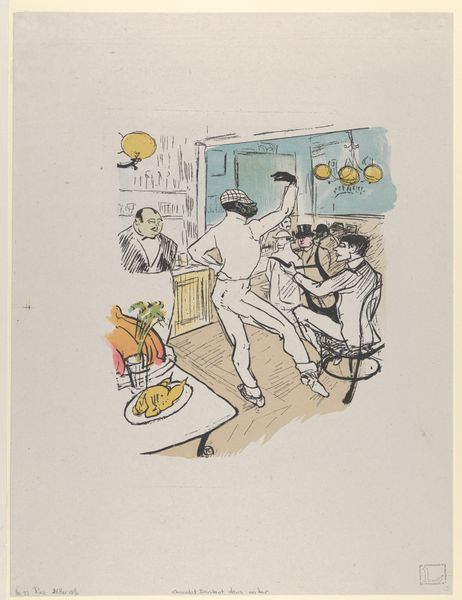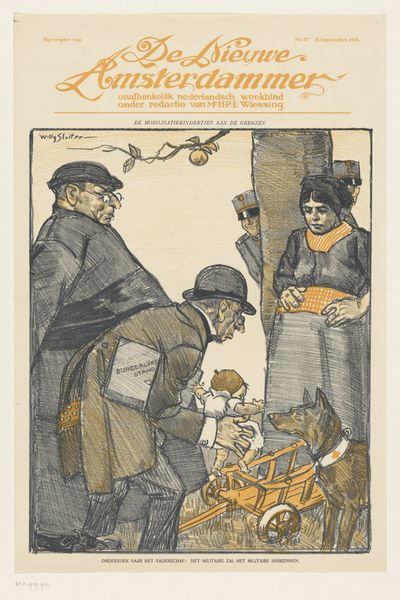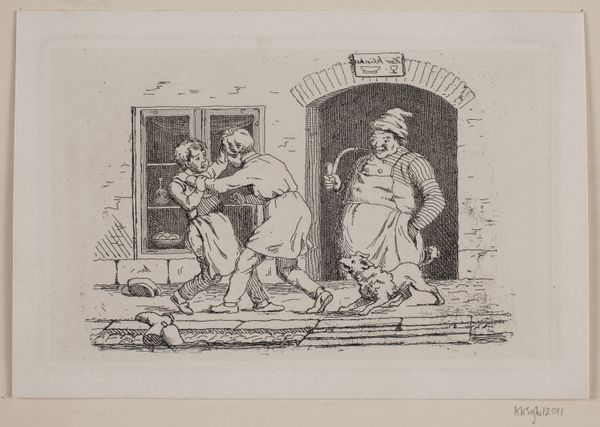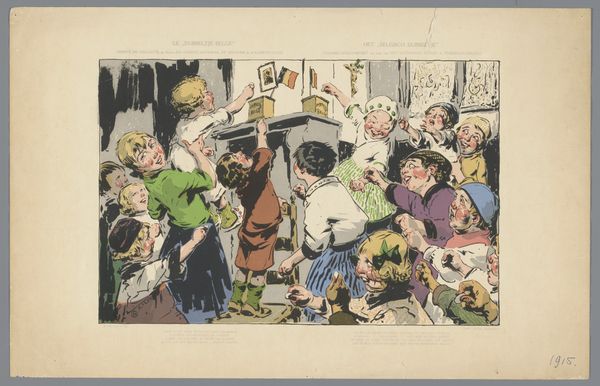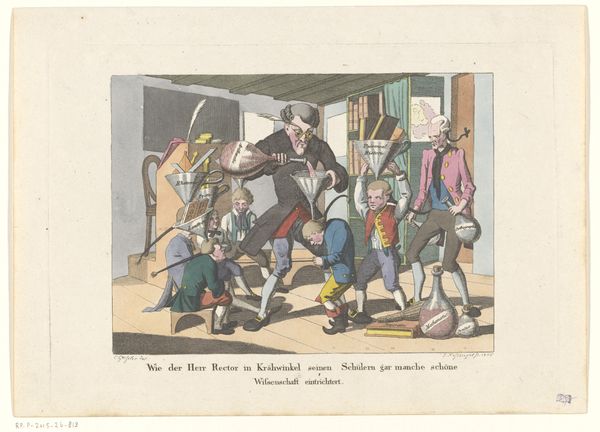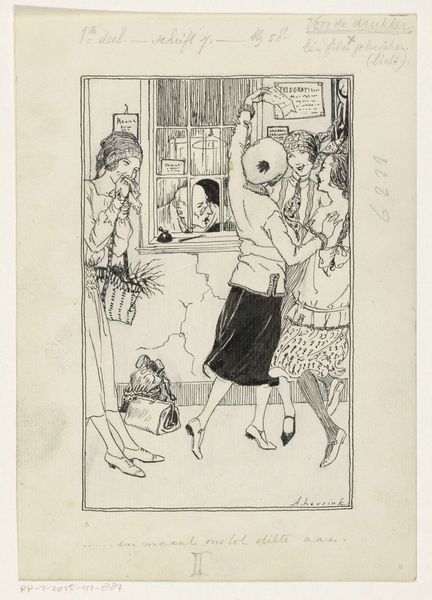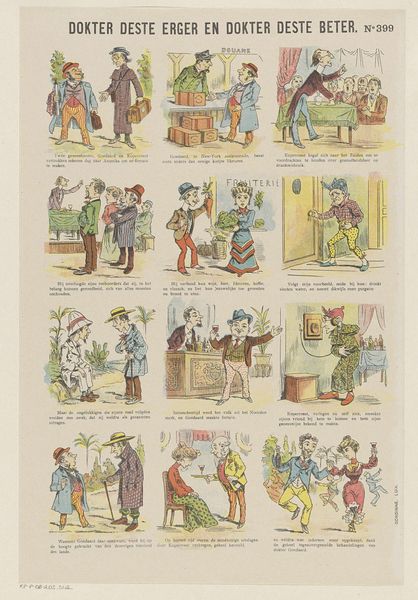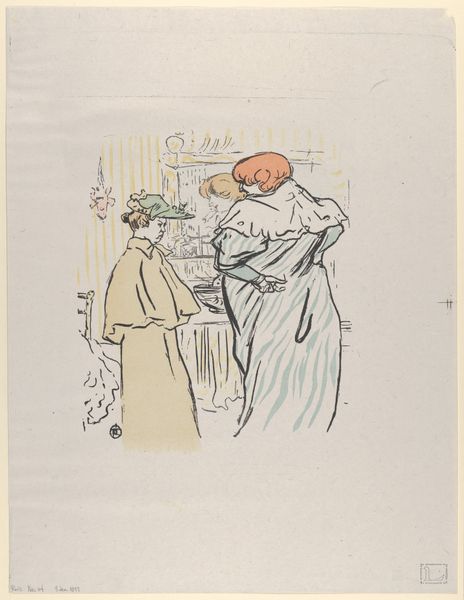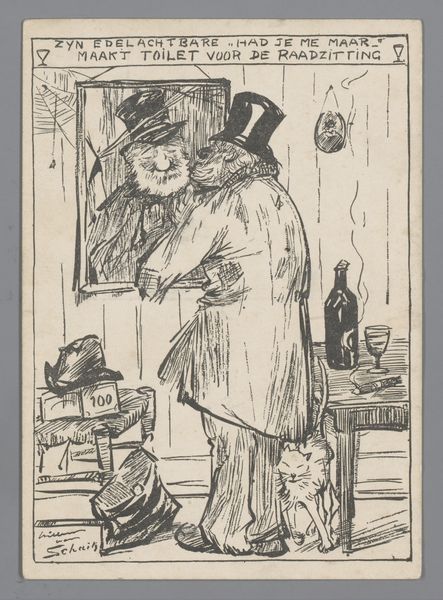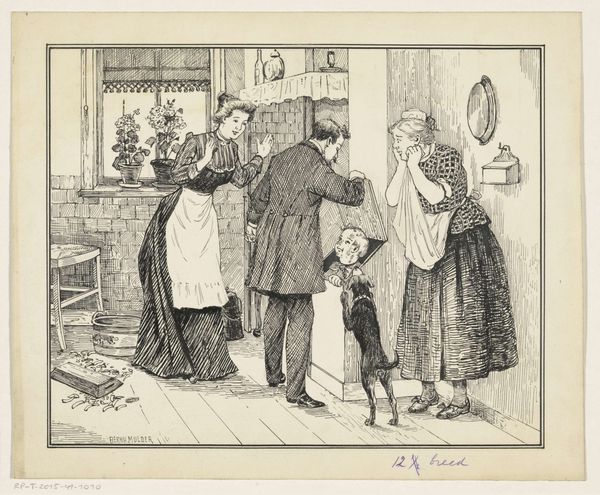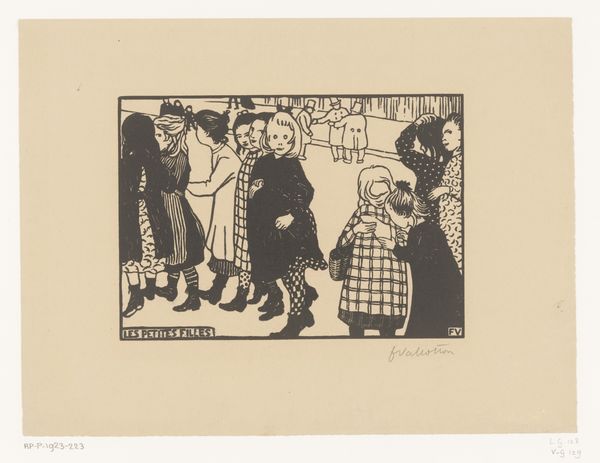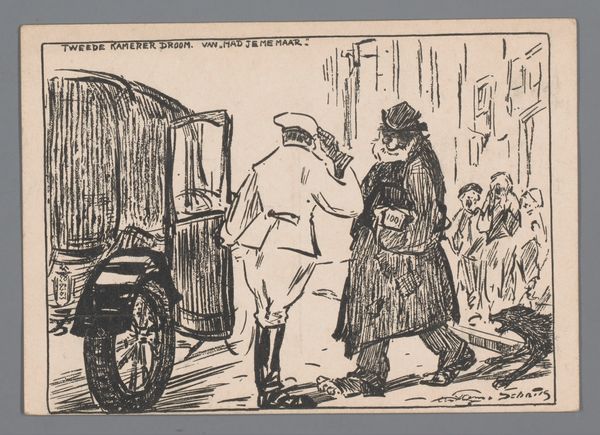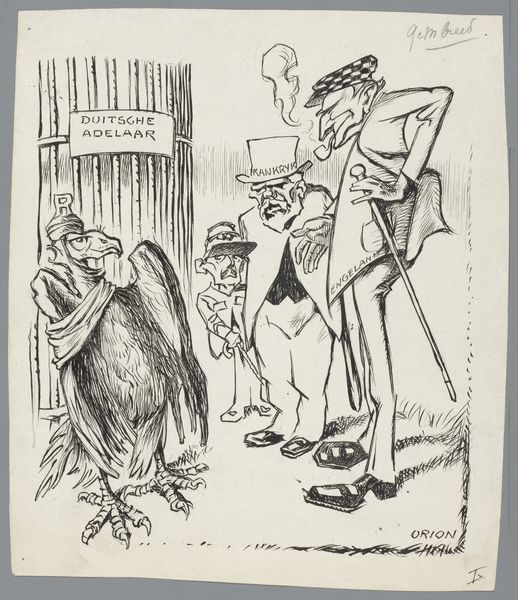
print, woodcut
narrative-art
woodcut
symbolism
cityscape
Dimensions: height 421 mm, width 501 mm
Copyright: Rijks Museum: Open Domain
Editor: This woodcut print from 1915 by Georges Hermann Rene Paul, titled "Soldaten plunderen een huis," which translates to "Soldiers plunder a house," depicts quite a chaotic scene. The looting is palpable, and the contrast is unnerving, especially with how mundane the soldiers seem to be. How do you interpret this work? Curator: This print acts as a powerful indictment of wartime behavior and the violation of cultural heritage, using the graphic medium of woodcut to amplify its message. I see the rigid, almost cartoonish portrayal of the soldiers not as mundane, but as emblematic of an inhumane system that strips individuals of their empathy, reducing them to cogs in a machine of destruction. Consider how the artist contrasts their cold indifference with the rich textures and patterns of the looted objects – doesn't it evoke questions about whose culture and values are considered "fragile" or worthy of protection? Editor: I see what you mean. It's like they are purposefully devaluing the cultural worth of the items. I didn’t catch that. It does make you wonder what that says about how society enables the act of looting. How can something like this act as a form of social commentary? Curator: It critiques the power dynamics inherent in warfare, doesn't it? By centering the act of plundering, the artist foregrounds the dispossession and erasure of identity inflicted upon the victims of war. And note the inscription "Kultur und Ernte" or "Culture and Harvest", it might be considered cynical or sarcastic, if these men are harvesters then they're reaping other people's labor. The artist encourages viewers to consider the ethical implications of military actions beyond the battlefield, positioning them as active participants in the ongoing discourse. Editor: That adds a new layer. This piece really has me considering whose voices and stories are suppressed during conflicts, and how art can serve as a tool for resistance and remembrance. Curator: Exactly! Hopefully we are reminded that engaging with art like this pushes us to critically examine our roles in perpetuating or dismantling systems of oppression, both past and present.
Comments
No comments
Be the first to comment and join the conversation on the ultimate creative platform.
